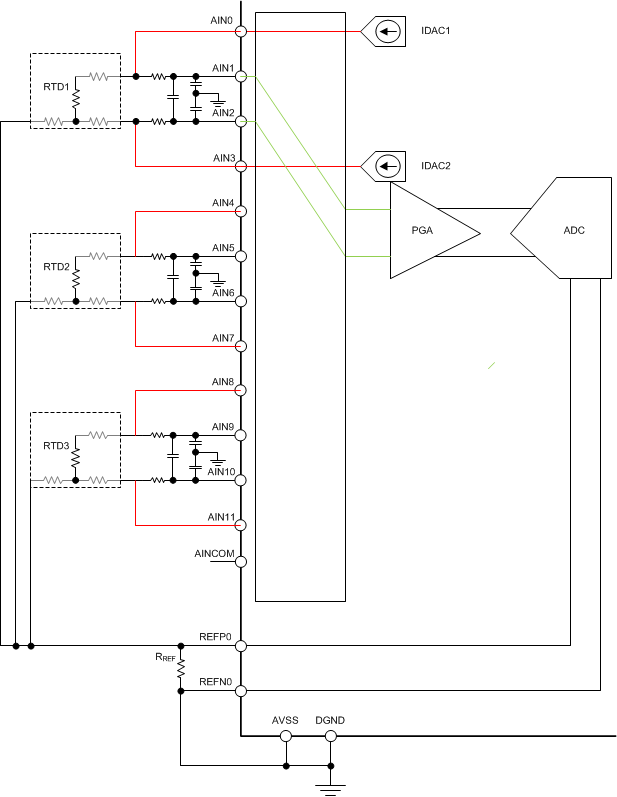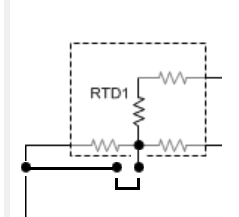Hi, I'm gonna use an ADS124S08 to measure 3 3-Wire RTDs. I'd be glad if you could check out my design. I will connect the RTDs according to the picture below.
These are my design parameters:
- AVDD 4.096V, AVSS 0V, Iex = 1mA, RTDmax = 153.58, Vref = 2.48V
Gain = Vref / (RTDmax * Iex) = 16.28 --> 16
Vcm = Vref + (RTDmax * Iex / 2) = 2.58V
AVSS + 0.1 + RTDmax * Iex * G / 2 < Vcm < AVDD - 0.1 - RTDmax * Iex * G / 2
1.33V < Vcm < 2.77V --> Vcm is ok!
Compliance Voltage is: AVDD - 0.6V = 2.7V
RTDmax * Iex + Vref = 2.63V < 2.7V --> Ok!
Fullscale utilization: n = 100 / Vref * (RTDmax * Iex) * Gain = 99.08%
Is my design correct or do you see any suggestions for improvement? Do I have to check whether the design also works with RTDmin? If I chose Vref = 2.5V, would I not need the reference resistor in my circuit because I can use the internal reference?
How do I design the input filters?
Kind regards
Cyrill





